4. The cardiac cycle
1/19
There's no tags or description
Looks like no tags are added yet.
Name | Mastery | Learn | Test | Matching | Spaced |
|---|
No study sessions yet.
20 Terms
What does the rhythmic depolarization of cardiac myocytes (caused by the conducting system) lead to?
It leads to the ordered process of atrial and ventricular contractions called the cardiac cycle
When and why does blood flow at different times during the cardiac cycle?
depends on the related things:
which chambers are contracting or relaxing; and
whether the blood pressure in a given chamber is sufficient to open the output valves of that chamber and allow blood to flow out of it
how to the valves open? what is an analogy?
when the pressure behind (upstream of) the valve is greater than the pressure in front of (downstream of) the valve, the valve will open and allow blood to flow out
it is like you pushing on the door to open it. if no pressure applied on the door, the door will not open.
what if the blood in front of the valve is greater than the blood behind the valve?
it will stay shut because the heart valves enforce one-way flow of blood through a healthy hear
it will not open backwards because the point of the valves is to prevent backward flow of blood
What are the right and left AV?
they are the valves WITHIN the heart where the pressure in the atria is higher than the pressure in the ventricle, the valve would open and blood would flow down from the atria to the ventricle
if the pressure of the blood is higher in the ventricle than the atria, the valve would be shut and blood would not flow through
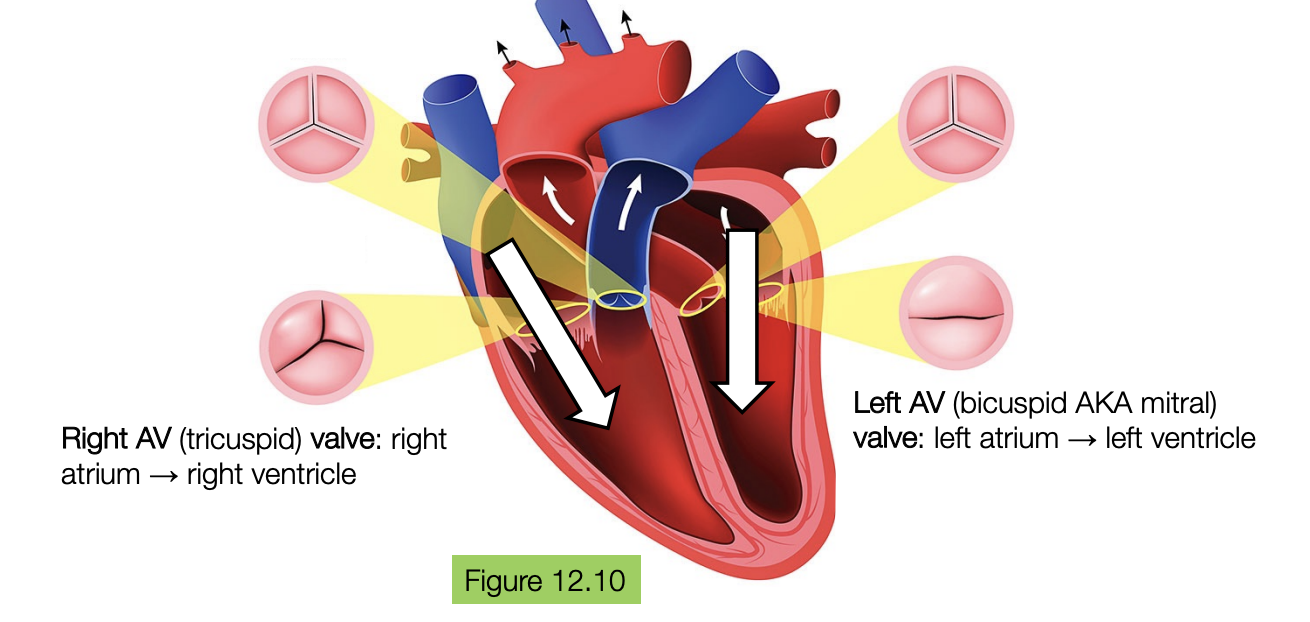
what are the next two valves called and what do they control?
they are the two valves that control the movement of blood out of the heart into circulation
the pulmonary semilunar valve is when the pressure of the blood is higher in the right ventricle than the pulmonary artery and the valve opens to let blood flow from the right ventricle to the pulmonary artery
the aortic semilunar valve is when the pressure of the blood is higher in the left ventricle than the aorta, and the valve opens to let blood flow from the left ventricle to the aorta


TP
in a healthy heart, the pulmonary semilunar valve connects the right ventricle and the pulmonary artery and allows blood to flow from the former into the latter
In the Wiggers diagram, why do they show left ventricular volume?
because that is the chamber that pumps blood out to the body, so the volume tells us if the heart is filling up with blood or squeezing out the blood
WD: what is systole and what are the conditions here?
systole is associated with high ventricular pressure (due to ventricular contraction), eventually exceeding atrial and aortic pressure, leading to the ejection of blood into the aorta
left ventricular volume is decreasing (since blood is flowing out of the L ventricle into the aorta + body)
left ventricular pressure is initially increasing and then starts to decrease in a parabola shape
the aortic is also increasing and then decreases in a parabola shape
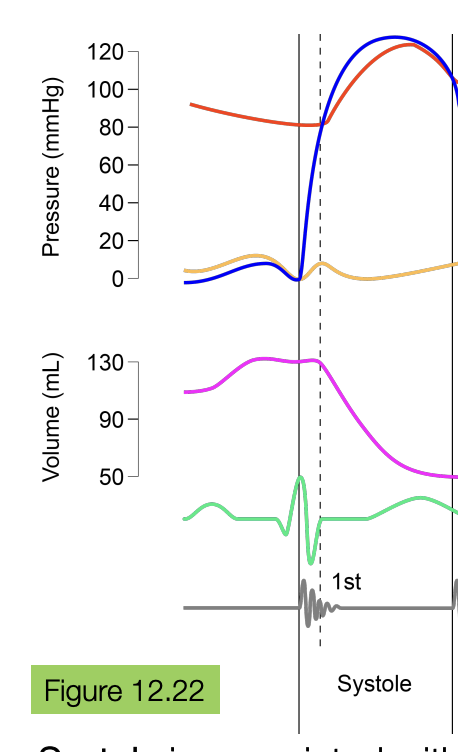
WD: what is diastole and what are the conditions here?
diastole is associated with low ventricular pressure (due to ventricular relaxation), lower than atrial and aortic pressure, leading to the filling of blood into the ventricle

WD: what starts the heartbeat? what happens next? why is L atrial pressure so much smaller than L ventricular pressure?
the SA node in the conducting system bursts
the heart squeezes (contracts) and both the left ventricular and left atrial pressure increase
since the walls of the atria is much weaker than the walls of the ventricle, the pressure of the ventricle increases significantly higher
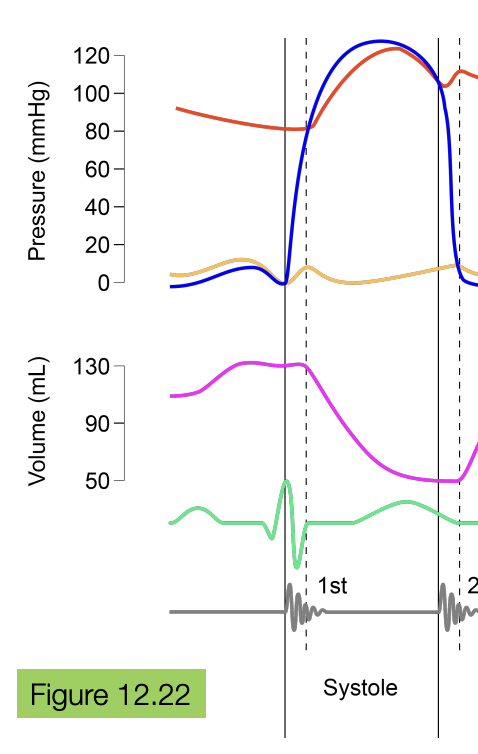
WD: during the diastole stage, why is the left atrial pressure slightly higher than the left ventricular pressure?
because the atrial pressure behind the L AV valve is higher behind than in front and the blood flows from the atria to the ventricle
so the ventricular volume during the diastole stage goes up
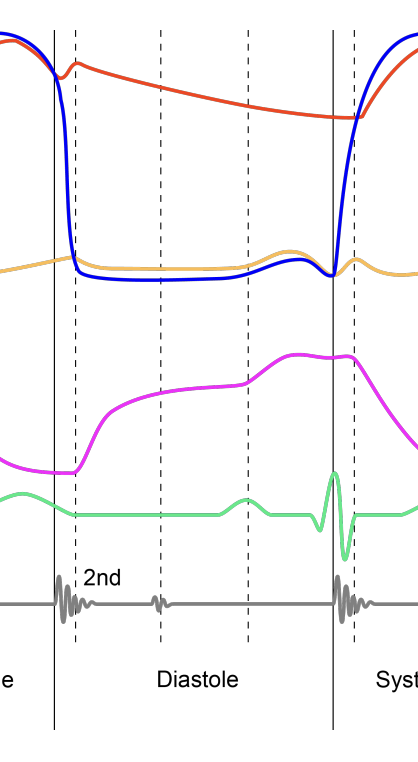
WD: when is the heart the fullest of blood than it would ever be?
at the end of disatole

WD: is the semilunar valve open at the start of systole? why or why not? does blood flow out and what is the blood volume?
no because semilunar valve flows from the LV to the atrial, and at the start of systole, the pressure of the blood is higher in the atrial than in the LV
blood does not flow in or out so the blood volume stays the same
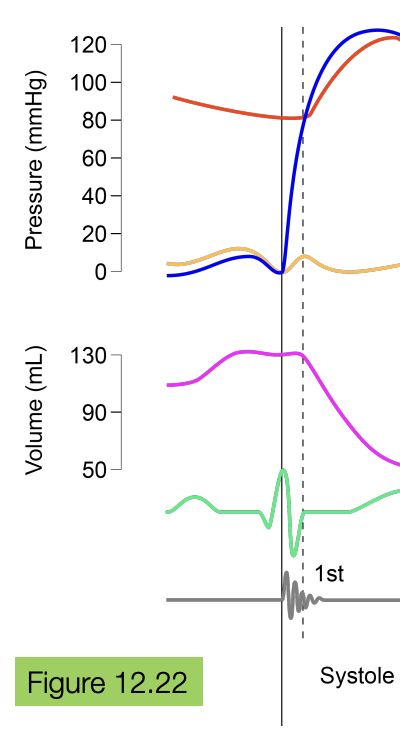

practice drawing and labeling
end of diastole —> the atrial pressure is higher than the ventricular pressure because the blood is flowing from the atria into the ventricle. ventricular volume increases and once the blood is mostly in the ventricle, the volume stays the same
systole —> the ventricular pressure starts to increase as the blood is flowing out into the aorta. the aortic pressure increases because blood is flowing there. the ventricular volume is decreasing as blood is flowing out of the ventricle into the aorta
start of diastole → once ventricle has pushed out all the blood, the pressure decreases as the ventricle relaxes and the ventricular volume is at its lowest
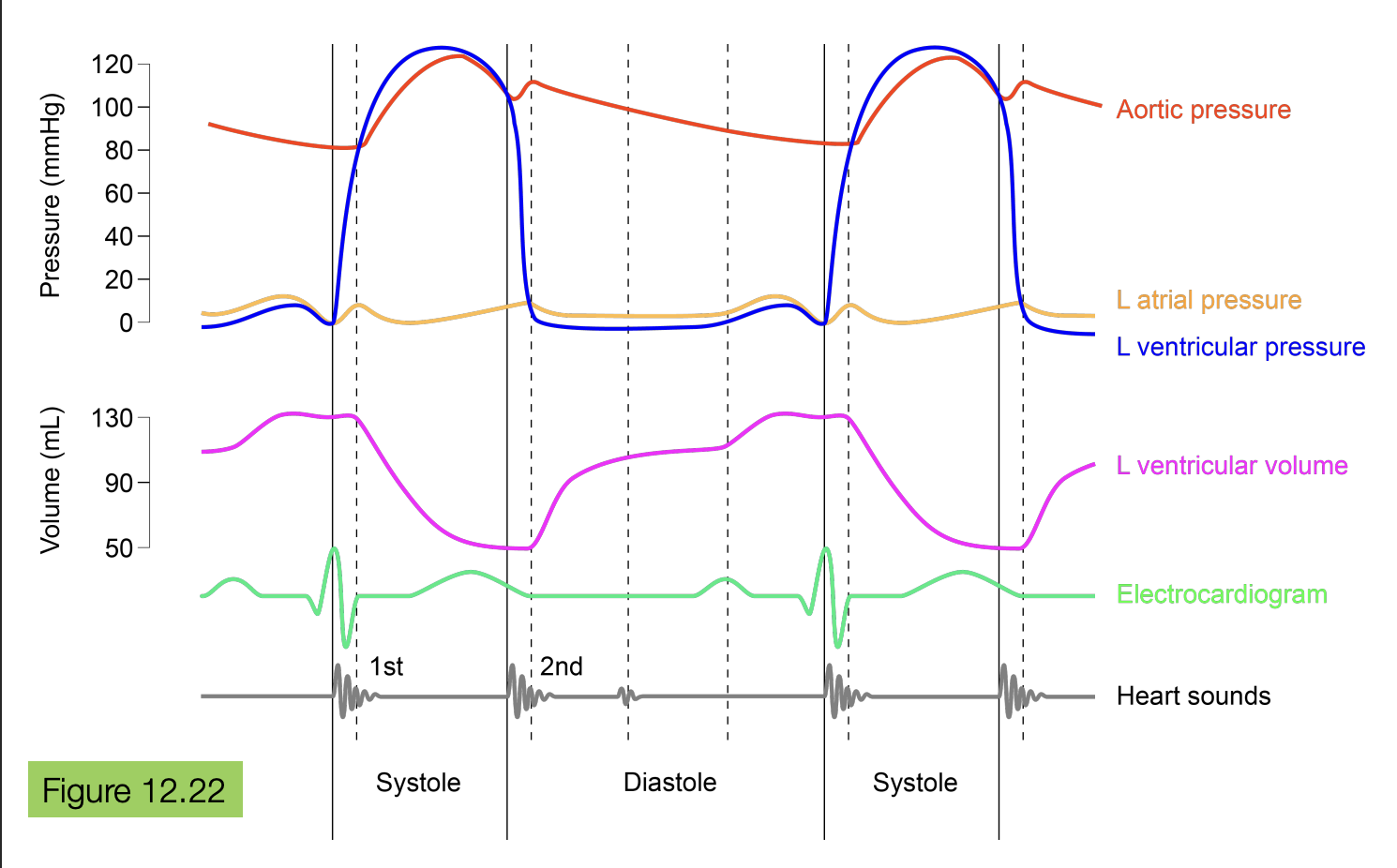
what is the atrial kick? do we need the atrial pressure that much?
at the end of diastole, the atrial pressure increases slightly to push all the blood left in the atria into the ventricle
the atrial pressure is not that all important because the blood will still flow passively from the atrium to the ventricle. so without the kick, 85% of the blood would already flowed passively into the ventricle. the kick maximizes blood flow, and makes it closer to 100%

what causes blood flow? is it the valves open and blood flows?
no, the compartment changing (contraction vs relaxation) leads to pressure changes that result in the valves being opened or closed
when do valves open and close in one heartbeat?
at the start of systole, the left AV closes
because the ventricular pressure is now higher than the atrial pressure, so the valve is closed to prevent backflow
once ventricular pressure increases to intersect atrial pressure, the aortic semilunar valve opens
because the LV is higher pressure than the aortic, and so the valve opens so blood can flow from the LV into the aorta
as the heart relaxes and the both the aortic and ventricular pressure begins to decrease, the aortic semilunar closes to prevent backflow
at the beginning of diastole, the heart relaxes so much that the left AV opens again
because the atrial pressure is higher than the ventricular so the valve opens to let blood flow from the atria into the ventricle
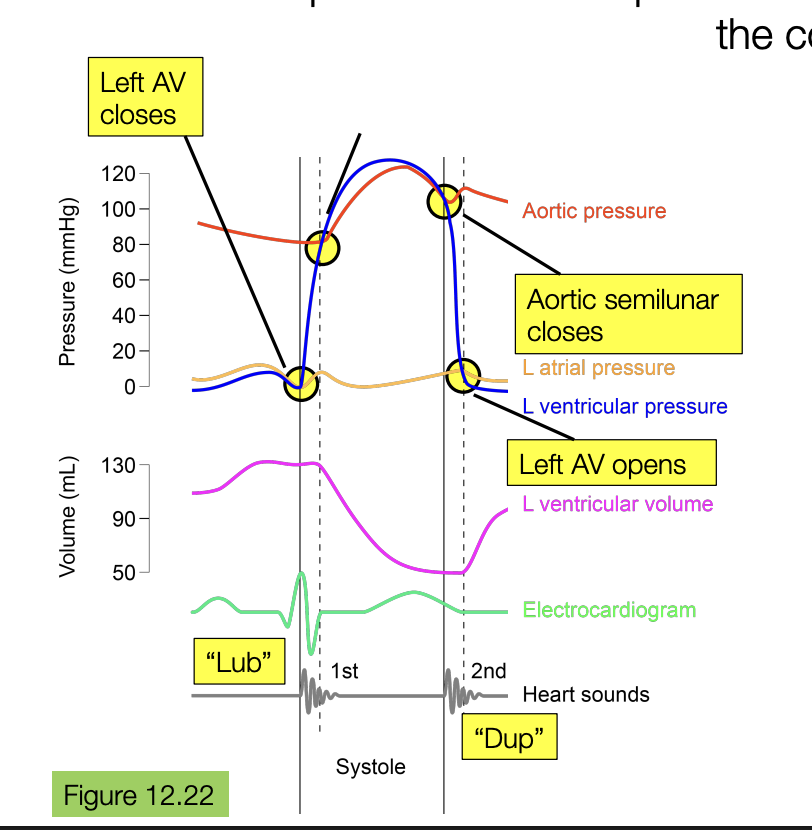
what are the isovolumetric periods and when does it happen and why?
isovolumetric periods are when the ventricular volume does not change
this happens twice: once when the atria is nearly finished filling the ventricle, and another when the the heart is so relaxed after all the blood have left the ventricle into the aorta
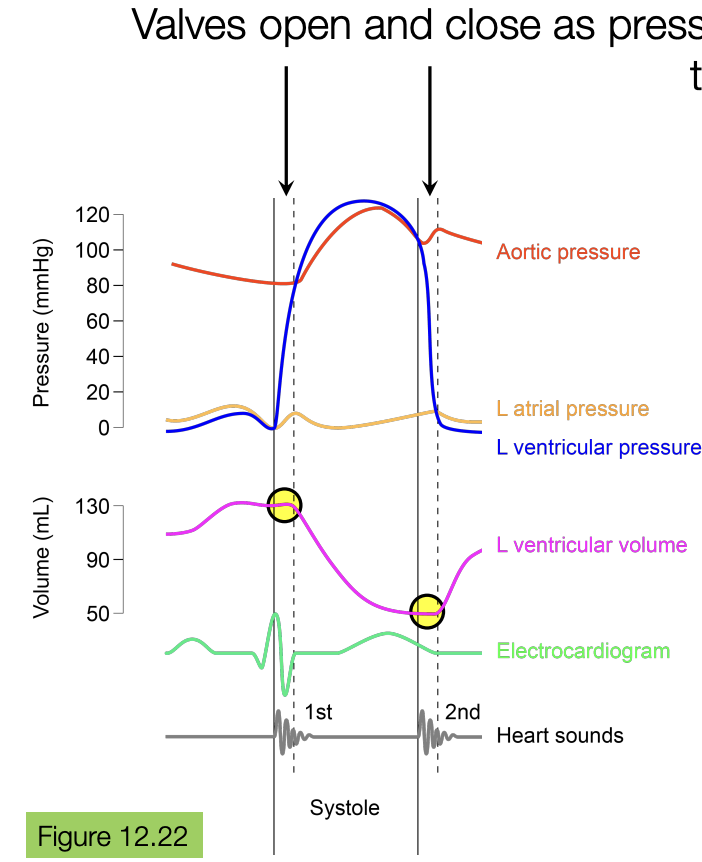
TP: When blood is flowing from the left ventricle into the aorta during systole, which of the following is true?
Select an answer and submit. For keyboard navigation, use the up/down arrow keys to select an answer.
a
The volume of blood in the left ventricle is increasing.
b
The pressure in the left ventricle is lower than the pressure in the aorta.
c
The left AV valve is closed.
d
The pressure in the left ventricle is lower than the pressure in the left atrium.
c → the left AV valve is closed